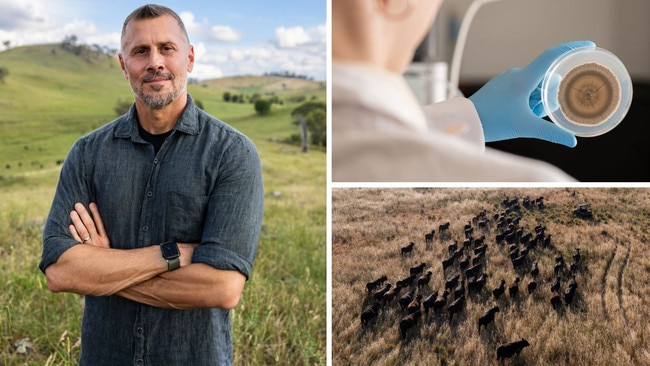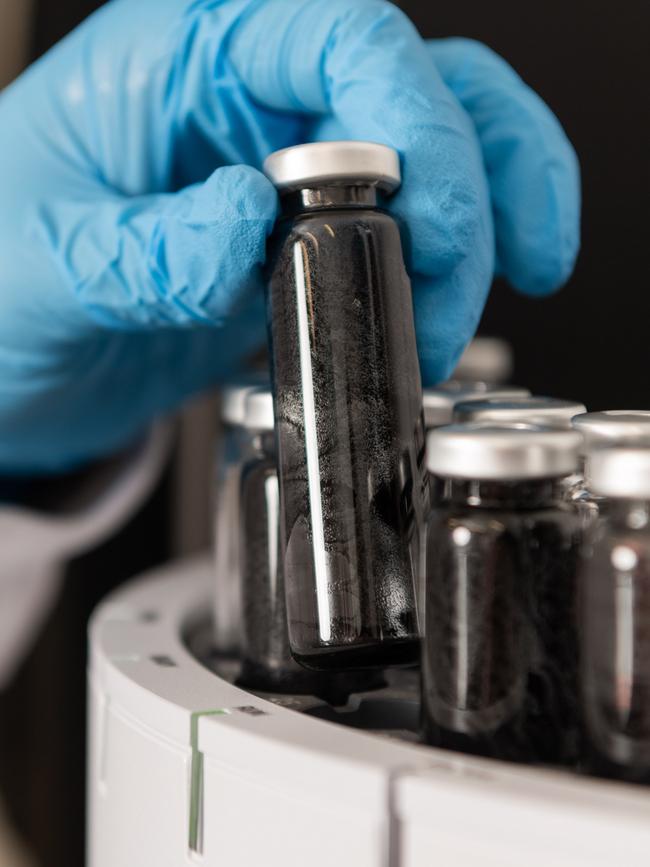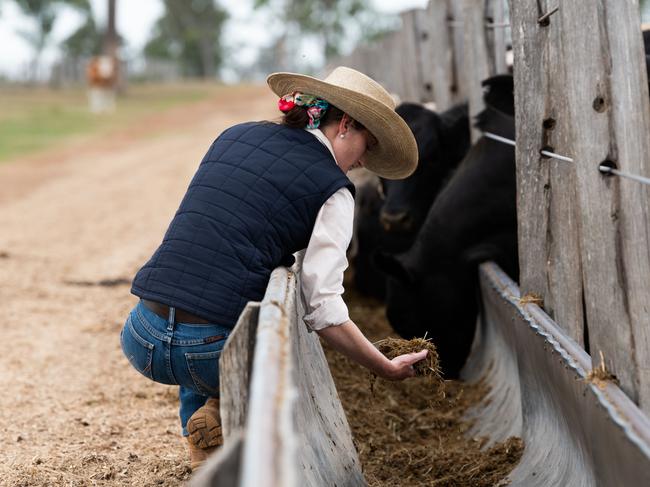Cattle farmers find a new solution to anti-red meat push
Australian scientists have found a natural feed additive that can slash livestock methane emissions by up to 90pc, offering an alternative to the future promoted by activists who cite climate change as a reason to reduce red meat consumption.

Australian scientists have found a natural feed additive that can significantly slash livestock methane emissions and offers the industry a new weapon to fight the calls for people to reduce their consumption of red meat to help prevent global warming.
Researchers have confirmed the native Curvularia soil fungi can be cultured to produce bromoform that, when fed to ruminants like cattle and sheep, can reduce the methane emissions contained in their belches by up to 90 per cent.
With ruminant livestock identified as the biggest source of greenhouse gas emissions in the agriculture industry, the fungi offers an alternative to the future promoted by activists who cite climate change as a reason to reduce red meat consumption.
Derek Peterson, chief executive of Australian company Roam Agricultural, said the organisation was focused on giving livestock producers solutions to retain their social licence and access to global markets that are demanding proof of reduced emissions.
“We love that we are doing something that’s good for the environment, but we don’t approach this from a mentality that we are saving the planet,” Mr Peterson said. “We are livestock people and we need to feed our planet.
“Everyone has been pointing at meat and saying it is bad (for emissions) but they don’t have the tools to fix it at this point. That’s what we’re trying to do.”
Proof of the fungi’s efficacy was endorsed in a scientific paper published in the journal Biotechnology Reports.
Confirmation of the breakthrough at the EvokeAg conference in Brisbane this week follows years of research and development by Roam Agricultural, which was partly funded by the federal government.
Some countries, including Denmark, have introduced methane taxes for livestock producers, but farmers in Australia have warned it would be devastating to the industry, which has spent millions of dollars trying to resolve the issue.
While the seaweed asparagopsis has been flagged as a potential solution, the greatest challenge has been in how to cost-effectively produce enough of it to make an affordable and sizeable dent in the emissions footprint of the nation’s 27 million-odd cattle herd.
But Mr Peterson said the Curvularia soil fungi is “highly culturable”, with a facility the size of a microbrewery being developed in Queensland capable of supplying enough fungi to supplement 30 to 40 per cent of the national herd.
“The biggest issue they’ve (asparagopsis researchers) run into is the infrastructure cost,” Mr Peterson said. “The growing, manufacture, production has been a huge challenge for them.”

Bromoform derived from the fungi is mixed into a powder that can be added to the feed of cattle and sheep.
It’s an easy fix in a feedlot, but harder on a rangeland grazing operation where cattle aren’t regularly fed by hand.
On those properties the powder can be mixed into lick blocks, pellets and molasses that the cattle on grazing lands already use to supplement their diets.
Roam is concurrently working to help develop a carbon credit methodology that would enable farmers who can prove they have reduced their emissions by using the supplement can generate a credit, offsetting the cost of buying the product.
The CSIRO and multiple universities and cattle businesses have worked with Roam to test the product, which Mr Peterson estimated could be available for commercial purchase within two years.

Being a natural product that produces no known toxins, Curvularia also has advantages over the synthetically formed but medically safe Bovaer, which caused a controversial stir last year when some meat and dairy producers started using it to reduce their emissions.
“We think it’s very important that there’s a natural pathway for methane mitigation,” Mr Peterson said.
University of Western Australia researcher Zoey Durmic said trials were under way to test the product’s efficacy under a variety of diets and production systems.
“In early-stage testing, the fungal extracts had considerable impact on reducing methane, including almost complete inhibition, without having negative impacts on rumen fermentation characteristics,” Dr Durmic said.





To join the conversation, please log in. Don't have an account? Register
Join the conversation, you are commenting as Logout